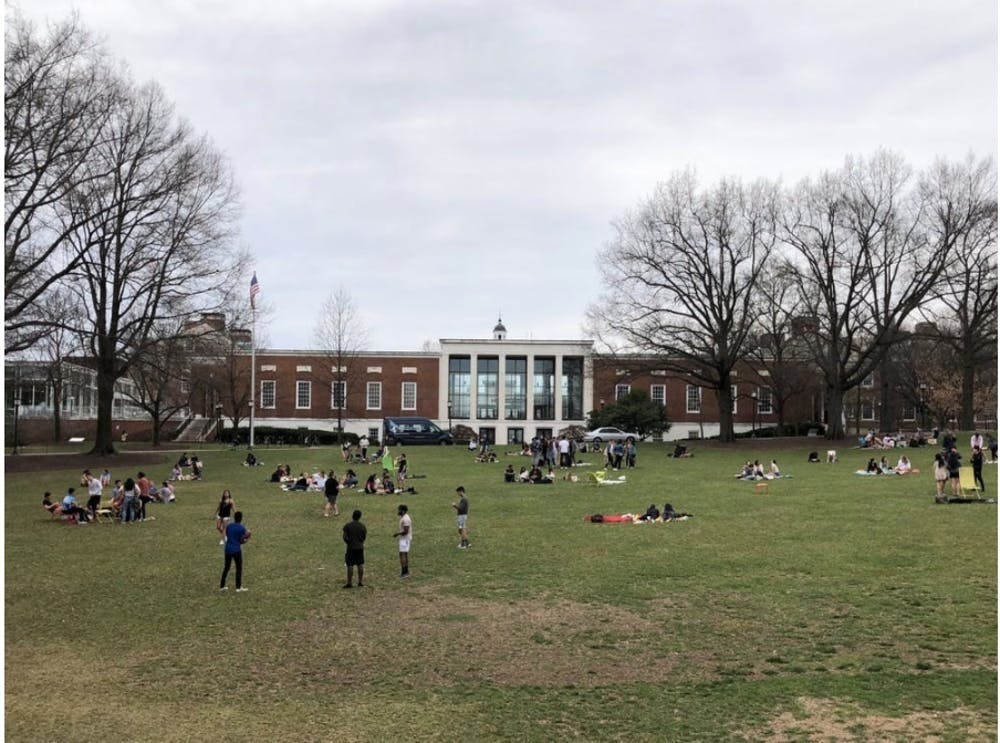There is no denying that the situation across the country has changed dramatically since the end of June when Hopkins announced its initial plan for returning to campus this fall. With the exception of the Northeast, coronavirus (COVID-19) numbers have been trending in the wrong direction.
In late June, Maryland reported a 14-day average of new cases around 370; it is now around 870. Even more alarming is the fact that much of these recent increases stem from an increased infection rate in Baltimore. If it wasn’t already clear, Hopkins must have a safe and clearly defined plan to bring students back to campus while keeping COVID-19 infections to a minimum. In my opinion, there is only one path forward for the University: to stay the course and allow hybrid instruction.
The fact of the matter is that the University urged sophomores, juniors and seniors to sign leases for the school year back in June. There is no going back on the fact that come September, a large majority of the Hopkins community will be back on campus, impervious to whether or not classes are online or in-person. It is now the University’s responsibility to provide us with a safe and fulfilling environment conducive to in-person learning.
I fear that if Hopkins changes course to chiefly online instruction, many of the testing and monitoring capabilities of a world-class public health institution will be lost. In an op-ed for the Wall Street Journal, Cornell University President Martha Pollack and Provost Michael Kotlikoff shared similar concerns and urged campus leaders to ensure a safe return to campus. Pollack and Kotlikoff’s concerns were supported by epidemiological research completed by a team of PhD students and professors at Cornell.
The research simulation compared COVID-19 cases on two hypothetical campuses: one that opened for in-person instruction with aggressive public health safeguards and one that chose to “play it safe” by providing online learning and less aggressive public health safeguards. Researchers found overwhelming evidence that the school that chose to “play it safe” fared far worse. I fear that Hopkins may become that school if it chooses to pursue a virtual semester in which many students would still remain in Baltimore.
Unfortunately, Hopkins has not been publicly taking the same steps as other institutions returning to campus this fall. Academically, Hopkins is a leader in public health. Sadly, with regards to a return to campus this fall, we have not been. At this point in the pandemic, we know how to effectively reduce the rate of infection by listening to public health professionals. I encourage the University to adopt some of the precautions that other schools returning to on-campus are taking. Here are just a few:
1) Listen to Maryland Governor Larry Hogan’s advice and encourage all students coming from a state with a positivity rate of over 10 percent to self-isolate for 14 days until their test results come back. Hopkins should test all students from these hotspots.
2) Brace for the mass-testing of all students who want a test. Hopkins should look to utilize a space such as Homewood Field for walk-in testing at the start of the school year.
3) Encourage all students to avoid close contact outside of their family unit and record their temperature for 14 days prior to returning to campus.
4) Require students to complete an online seminar outlining proper safety protocols prior to arriving on campus.
5) Follow the lead of schools like Tulane University and make use of outdoor campus space to create outdoor classrooms.
6) Set up tents and picnic tables labeled for adequate social distancing in the freshman quad outside of the Fresh Food Cafe for meals. Expecting all freshmen to eat in their dorms is not realistic.
7) Mail COVID-19 tests to students prior to arrival. Unfortunately, we may have missed the boat on this one, but it could still greatly expedite COVID-19 testing on campus for students not traveling via a high-risk transportation method.
8) Hire a sufficient amount of COVID-19 contact tracers to identify people that come in contact with infected persons. Perhaps this would be a good opportunity for students to make up for what will likely be a shortage of on-campus jobs.
9) After what will likely be an initial rise in infections, utilize regular randomized sample testing of students.
I must note that the University may already be enlisting these safeguards. Maybe there is a calculated reason for the dumbfounding radio silence that it has subjected its community to since late June. I truly hope that Hopkins has been properly preparing for a safe return to campus and my aforementioned suggestions are just redundancies of steps the administration is already taking.
I would also like to note that Hopkins is allowing students to choose whether or not they will return to campus. Everyone choosing to come to campus knows the risks. Any student returning to campus expecting a low-risk environment should seriously consider taking classes online this fall. Fortunately, college-aged students have a significantly lower risk of developing serious COVID-19 complications; however, it’s extremely important to keep infections to a minimum for obvious reasons.
In my opinion, the only way that the University can effectively curb a rise in infection among the Hopkins community is by opening for on-campus instruction for those who want it, while simultaneously employing aggressive public health safeguards that I know our school can utilize.
Max Steinberg is a rising senior from Newton, Massachusetts studying Economics and History.





